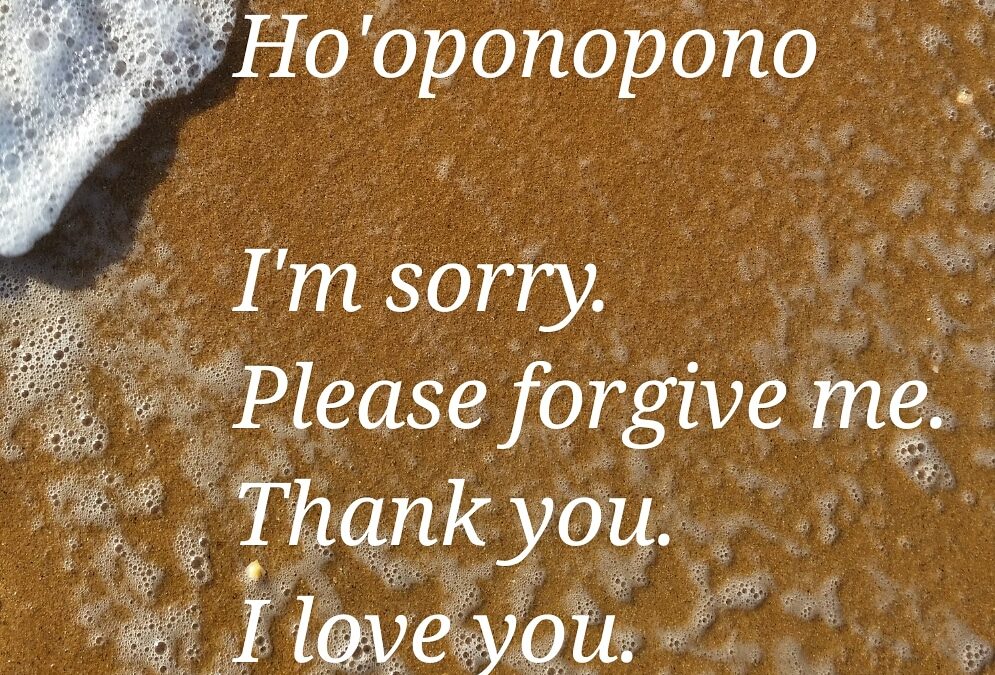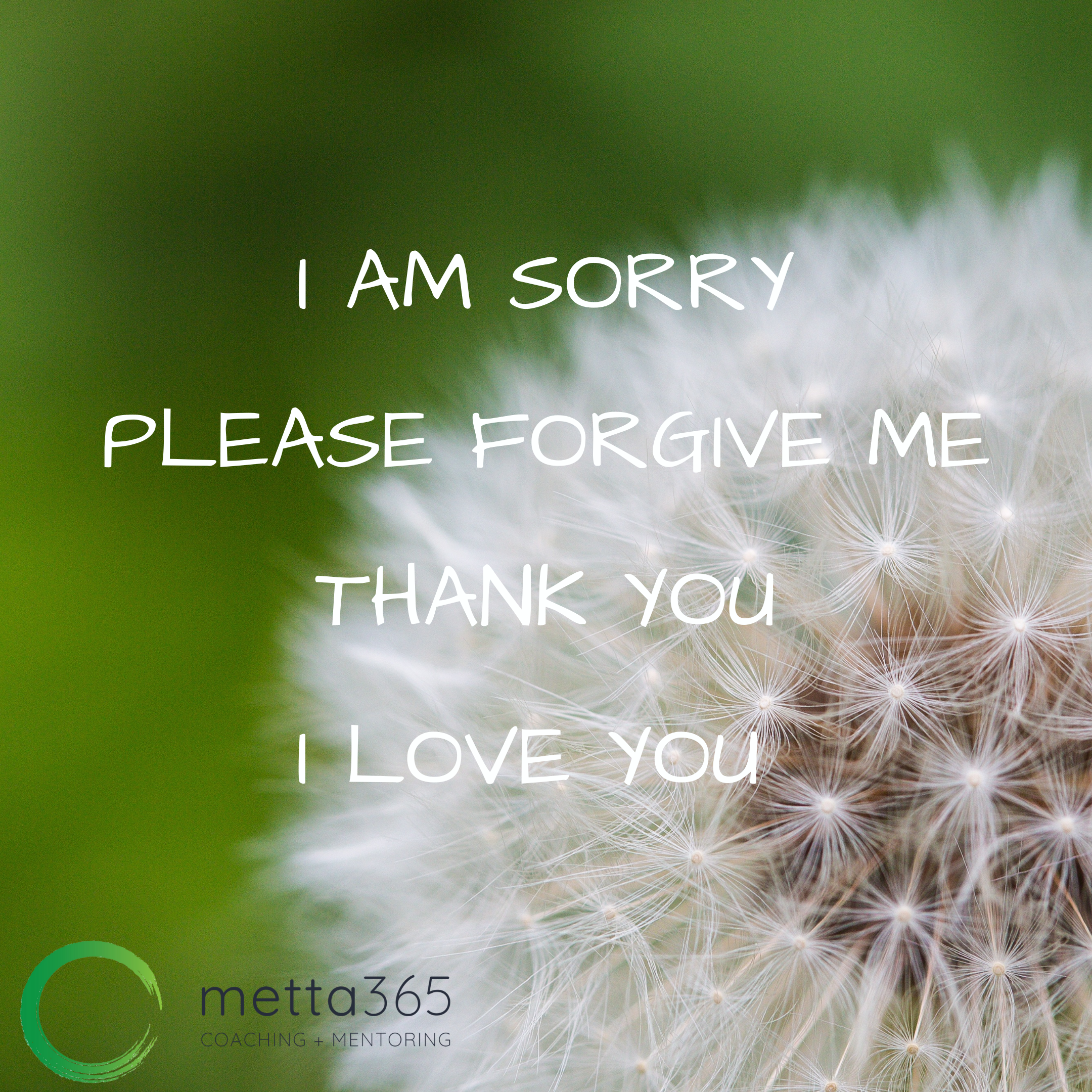You’ve likely experienced times in your life when forgiveness seemed like an impossible task. Whether it was a betrayal, a hurtful remark, or a lingering resentment, letting go of past grievances can feel incredibly challenging. That’s where Ho’oponopono comes in. This ancient Hawaiian practice offers a transformative approach to forgiveness, not only towards others but also towards yourself. By understanding the principles of Ho’oponopono and implementing its powerful techniques, you can find healing, release, and a renewed sense of peace within yourself.
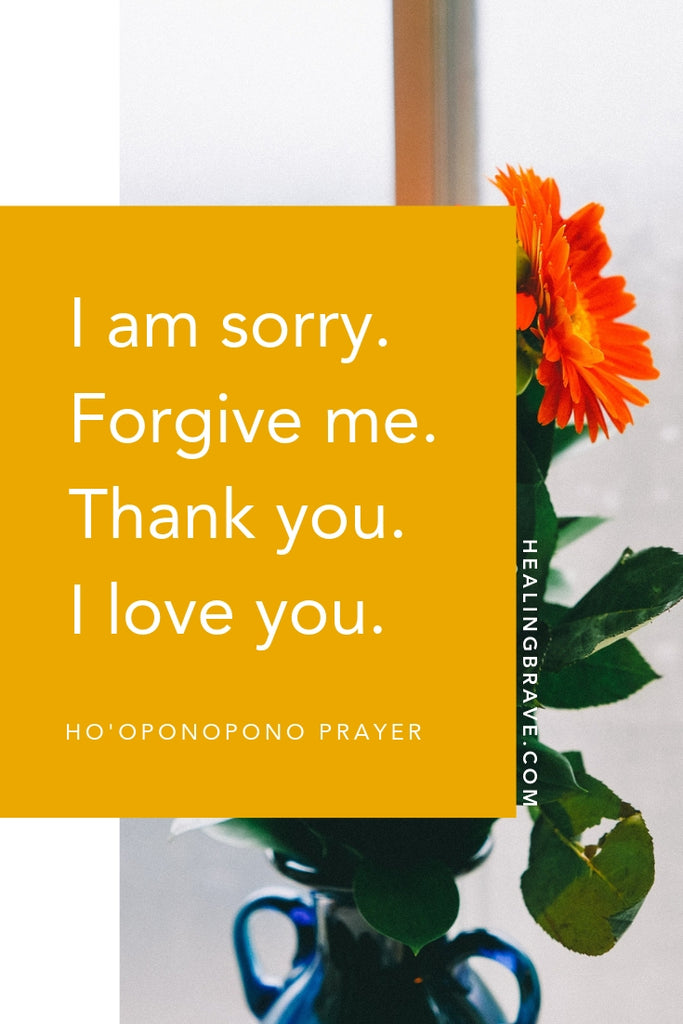
Understanding Ho’oponopono
Ho’oponopono is an ancient Hawaiian healing practice that focuses on the power of forgiveness and reconciliation. The word itself can be broken down into two parts: “ho’o” meaning “to make” and “ponopono” meaning “right.” When combined, Ho’oponopono can be translated as “to make right, correct, or harmonize.” This traditional practice has been passed down through generations in Hawaiian culture and is often used to restore balance and resolve conflicts within oneself and among others.
Origins of Ho’oponopono
The origins of Ho’oponopono can be traced back to ancient Hawaiian traditions. It was primarily used as a method to resolve disputes and restore harmony within families and communities. The practice involved gathering family members in a sacred space and engaging in open and honest discussions to express grievances, seek forgiveness, and make amends. Through the guidance of a mediator, individuals were encouraged to take responsibility for their actions, express remorse, and ask for forgiveness. This process allowed for healing and reconciliation to take place.
Philosophy and Principles
At the core of Ho’oponopono is the belief in the interconnectedness of all things and the acknowledgment of one’s role in creating their current circumstances. The practice emphasizes personal responsibility, accountability, and the power of forgiveness in releasing negative emotions and restoring wellbeing. It is driven by the understanding that healing starts from within and that by taking responsibility for one’s actions and thoughts, a person can create positive change in their life and relationships.
The Practice of Ho’oponopono
The practice of Ho’oponopono is a deeply personal and introspective journey. It involves a series of steps designed to release negative emotions, promote forgiveness, and cultivate a sense of gratitude and love. While traditionally performed in a group setting, Ho’oponopono can also be practiced individually.
The Power of Forgiveness
What is Forgiveness?
Forgiveness is a fundamental aspect of Ho’oponopono, but what exactly does it mean to forgive? Forgiveness, in its essence, is the act of letting go of resentment, anger, and the desire for revenge towards oneself or others. It is a conscious choice to release negative feelings and embrace a more compassionate and understanding perspective. Forgiveness does not mean condoning or forgetting the actions that caused harm; rather, it is a decision to move beyond the pain and seek healing and reconciliation.
Benefits of Forgiveness
The act of forgiveness carries numerous benefits for the individual who practices it. Forgiveness has been linked to improved mental and emotional well-being, reduced stress levels, and increased happiness. It frees one from the burden of carrying negative emotions and allows for personal growth and healing. Forgiveness also plays a crucial role in rebuilding relationships and fostering a sense of connection and empathy with others.
Barriers to Forgiveness
While forgiveness can be transformative, it is not always an easy process. There are several barriers that can hinder the act of forgiveness, such as deep-seated anger, resentment, or a fear of being vulnerable. These emotional barriers can prevent individuals from fully letting go and moving forward. It is crucial to acknowledge and address these barriers to forgiveness in order to embark on a journey of healing and reconciliation.
Ho’oponopono and Forgiveness
Ho’oponopono as a Forgiveness Practice
Ho’oponopono provides a structured and intentional approach to forgiveness. It combines ancient wisdom with practical techniques to facilitate the release of negative emotions and promote healing. The practice of Ho’oponopono encourages individuals to take responsibility for their thoughts, actions, and emotions and seek forgiveness for any harm or hurt caused, both to oneself and others. It invites individuals to actively engage in the process of forgiveness and create space for healing and reconciliation.
The Four Steps of Ho’oponopono
Ho’oponopono consists of four key steps: repentance, forgiveness, gratitude, and love/ integration. These steps serve as a guide for individuals to navigate through the process of forgiveness and release negative emotions. Each step builds upon the previous one, creating a holistic and transformative practice.
Clearing Negative Emotions and Resistance
In order to fully engage in the practice of Ho’oponopono, it is important to clear negative emotions and resistance that may hinder the process of forgiveness. Negative emotions such as anger, resentment, guilt, or shame can cloud judgment and prevent true healing from taking place. Through introspection, self-reflection, and self-forgiveness, individuals can begin to release these negative emotions and create space for forgiveness and healing.
Step 1: Repentance
Recognizing Responsibility
The first step in the practice of Ho’oponopono is repentance, which involves recognizing and taking responsibility for one’s actions, thoughts, and emotions. It requires an honest and introspective examination of oneself and the acknowledgment of any harm or hurt caused to oneself or others. By acknowledging responsibility, individuals can begin the process of healing and seeking forgiveness.
Expressing Remorse
Once responsibility has been recognized, the next step is expressing remorse. This involves genuinely and sincerely acknowledging the pain or suffering caused and expressing genuine remorse for one’s actions. This step allows individuals to connect with the emotions of those affected and opens the door for healing and reconciliation.
Asking for Forgiveness
The final step in the repentance process is asking for forgiveness. This step requires humility and vulnerability as individuals reach out to those they have harmed and humbly request forgiveness. By taking this step, individuals acknowledge the impact of their actions and seek to repair and restore relationships. Asking for forgiveness is an essential part of the healing process, both for the person seeking forgiveness and for the person granting it.

Step 2: Forgiveness
Understanding the Power of Forgiveness
After going through the repentance process, the focus shifts to forgiveness. Understanding the power of forgiveness is crucial in this step. Forgiveness is a transformative act that releases the grip of negative emotions and allows for healing and growth. It is a gift that individuals give to themselves, freeing themselves from the burden of resentment and anger.
Letting go of Resentment and Anger
Forgiveness requires letting go of resentment and anger towards oneself or others. It involves consciously choosing to release the negative emotions and replacing them with understanding, empathy, and compassion. Letting go of resentment and anger is not always easy, but it is a necessary step towards cultivating forgiveness and moving forward.
Finding Empathy and Compassion
Forgiveness involves finding empathy and compassion for oneself and others. It requires understanding that humans are imperfect and capable of making mistakes. By cultivating empathy and compassion, individuals can foster a sense of understanding and connection with others, leading to deeper forgiveness and healing.
Step 3: Gratitude
Cultivating a Grateful Attitude
The third step in Ho’oponopono is cultivating a grateful attitude. Gratitude plays a significant role in the forgiveness process as it helps shift focus from negative emotions to positive ones. By cultivating a sense of gratitude, individuals can develop a more optimistic and appreciative outlook, which supports the healing and reconciliation process.
Appreciating the Lessons Learned
Gratitude in Ho’oponopono also involves appreciating the lessons learned from past experiences. Every experience, no matter how challenging, offers an opportunity for growth and self-reflection. By acknowledging and appreciating the lessons learned, individuals can embrace their personal growth journey and find meaning in their experiences.
Embracing the Healing Power of Gratitude
Gratitude has immense healing power. It allows individuals to shift their perspective from what is lacking or negative to what is abundant and positive. By embracing the healing power of gratitude, individuals can cultivate a sense of inner peace, joy, and contentment, fostering a fertile ground for forgiveness and reconciliation to thrive.
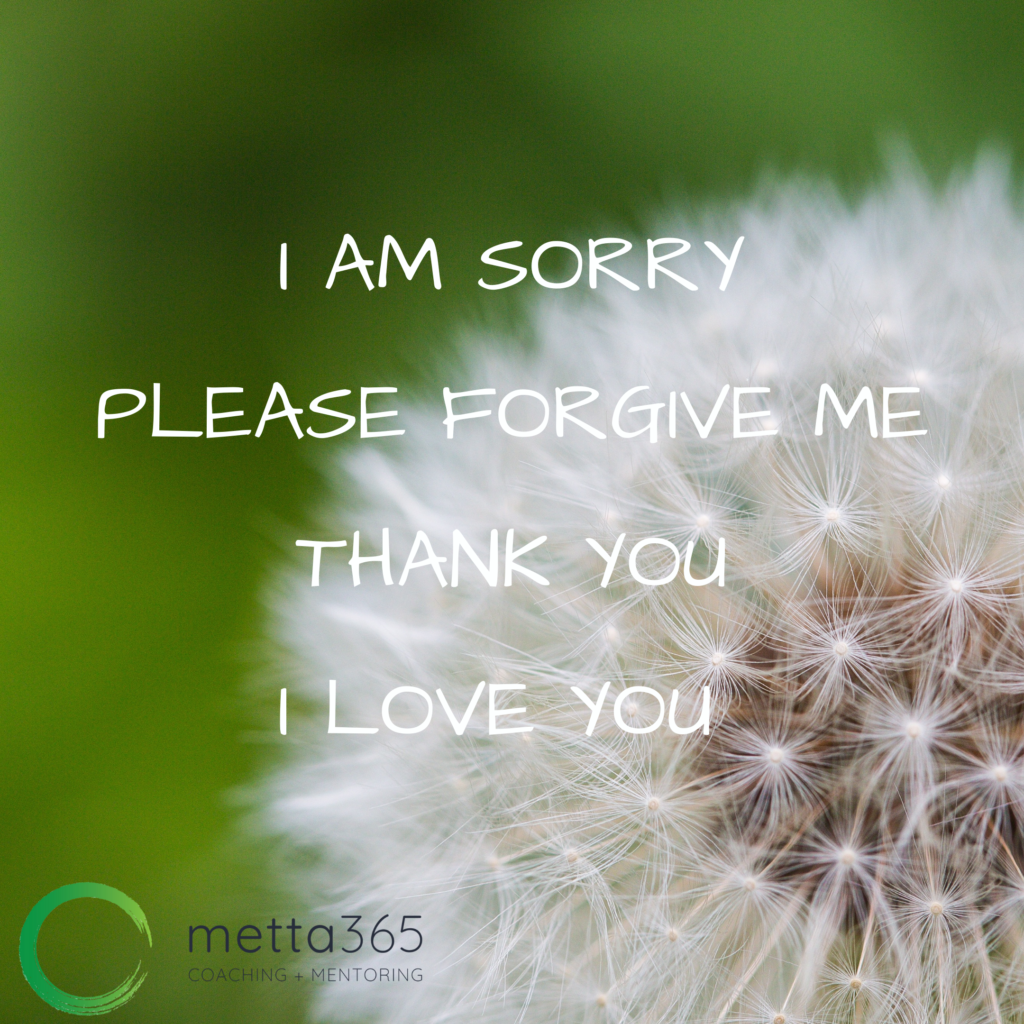
Step 4: Love and Integration
Embracing Unconditional Love
The final step in Ho’oponopono is embracing unconditional love. Love is the ultimate healing force and the highest vibration one can strive for. Embracing unconditional love involves letting go of judgments, resentment, and holding onto grudges. It means accepting oneself and others fully and completely. By embracing unconditional love, individuals can transform their relationships and create profound shifts in their lives.
Rebuilding Relationships
Love is a powerful catalyst for rebuilding relationships. By practicing Ho’oponopono and embracing unconditional love, individuals can begin to rebuild broken relationships, mend emotional wounds, and restore harmony. Love allows for the creation of meaningful connections and fosters understanding, compassion, and forgiveness.
Moving Forward with Integration
The final step in the Ho’oponopono process is integrating the lessons and experiences into one’s life. It involves taking the principles and practices learned throughout the journey of forgiveness and applying them to daily life. By integrating forgiveness, gratitude, and love into one’s being, individuals can experience profound personal growth and transformation.
Ho’oponopono Tools and Techniques
Meditation and Self-Reflection
Meditation and self-reflection are powerful tools that can support the practice of Ho’oponopono. Through meditation, individuals can quiet their minds and connect with their inner selves, allowing for deeper self-awareness and insight. Self-reflection enables individuals to examine their thoughts, emotions, and actions, providing an opportunity for growth and healing.
Ho’oponopono Mantras
Mantras are repetitive phrases or affirmations that can be used to focus the mind and promote healing. In the context of Ho’oponopono, mantras can be powerful tools for releasing negative emotions and promoting forgiveness. Simple phrases such as “I’m sorry, please forgive me, thank you, I love you” can serve as powerful reminders of the four steps of Ho’oponopono and can be repeated during meditation or daily affirmations.
Writing and Journaling
Writing and journaling can serve as therapeutic tools in the practice of Ho’oponopono. By writing down thoughts, emotions, and experiences, individuals can gain clarity and insight into their inner selves. Journaling can also provide a safe space for expressing emotions and exploring forgiveness and gratitude. It allows for introspection and can serve as a record of personal growth throughout the journey of Ho’oponopono.
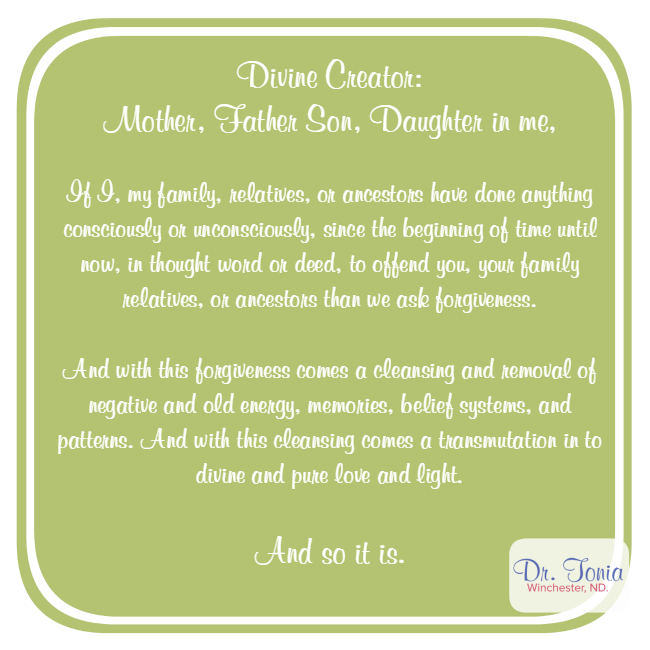
Supporting Research on Ho’oponopono
Scientific Studies and Findings
While Ho’oponopono is deeply rooted in Hawaiian traditions and spirituality, there is a growing body of scientific research exploring its effectiveness. Several studies have found that the practice of Ho’oponopono can lead to reductions in stress, anxiety, and depressive symptoms. It has also been associated with improvements in self-esteem, well-being, and overall life satisfaction. However, it is important to note that more research is needed to fully understand the mechanisms through which Ho’oponopono promotes healing and forgiveness.
Testimonials and Personal Experiences
In addition to scientific research, there are countless testimonials and personal experiences that attest to the power of Ho’oponopono. Individuals who have embraced the practice have reported significant shifts in their personal and professional lives, including improved relationships, better mental and emotional well-being, and increased self-awareness. These personal accounts serve as a testament to the transformative potential of Ho’oponopono in promoting forgiveness and healing.
Critiques and Controversies
Like any healing practice, Ho’oponopono has faced its share of critiques and controversies. Some argue that the practice oversimplifies forgiveness and may not address the complexity of certain situations. Others question the cultural appropriation and commodification of Ho’oponopono outside of its traditional context. It is important to approach Ho’oponopono with respect, cultural sensitivity, and an understanding of its historical and cultural significance.
Incorporating Ho’oponopono into Daily Life
Setting Intentions and Affirmations
Incorporating Ho’oponopono into daily life starts with setting intentions and affirmations. By consciously choosing to embrace forgiveness, gratitude, and love, individuals can create a positive shift in their mindset and approach to life. Setting daily intentions and affirmations can serve as reminders and anchors to stay committed to the principles of Ho’oponopono.
Practicing Self-Forgiveness
Self-forgiveness is a vital part of Ho’oponopono. It involves recognizing and releasing self-blame, guilt, and shame. By practicing self-forgiveness, individuals can let go of past mistakes and give themselves permission to grow and change. Self-forgiveness opens the door for personal healing and creates space for self-compassion and love.
Extending Forgiveness to Others
In addition to self-forgiveness, extending forgiveness to others is an integral part of Ho’oponopono. By actively seeking understanding, empathy, and compassion towards others, individuals can foster healing and reconciliation in their relationships. Extending forgiveness to others requires a willingness to let go of past grievances and approach interactions with an open heart and mind.
In conclusion, Ho’oponopono is a profound practice that offers a pathway to forgiveness and healing. Its ancient wisdom and guiding principles provide a framework for individuals to release negative emotions, cultivate gratitude, and embrace love. By incorporating Ho’oponopono into daily life, individuals can experience profound personal growth, rebuild relationships, and find peace and reconciliation within themselves and with others.
